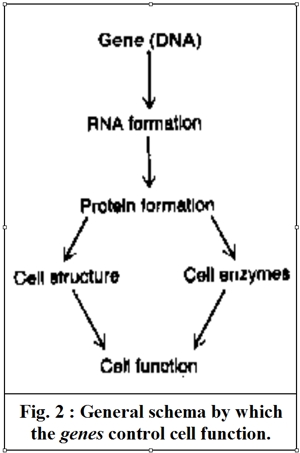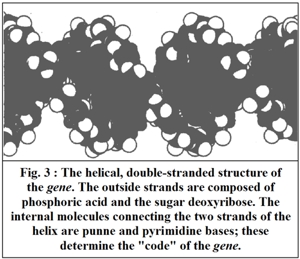 In most of the eukaryotic organism each cell may contain more than one DNA molecule and these together are known as chromosomes. The DNA is packaged and each DNA molecule may carry thousand of the genes. Therefore, on each DNA molecule thousands of genes are found in apparently random manner. The genes may be grouped into clusters of related genes, while in prokaryotes (bacteria) it is not unusual to have the need to express several genes, which are not the same but are related, in that the proteins, which are encoded by the genes are required along a common metabolic pathways. [107] The clusters of genes, which either encodes for the same protein or very similar proteins are called homologous. Their nucleotide sequences are very similar, clusters of similar genes are called multi gene families.
In most of the eukaryotic organism each cell may contain more than one DNA molecule and these together are known as chromosomes. The DNA is packaged and each DNA molecule may carry thousand of the genes. Therefore, on each DNA molecule thousands of genes are found in apparently random manner. The genes may be grouped into clusters of related genes, while in prokaryotes (bacteria) it is not unusual to have the need to express several genes, which are not the same but are related, in that the proteins, which are encoded by the genes are required along a common metabolic pathways. [107] The clusters of genes, which either encodes for the same protein or very similar proteins are called homologous. Their nucleotide sequences are very similar, clusters of similar genes are called multi gene families.
Virtually every one knows that the genes control heredity from parents to children, but most persons do not realize that same genes control the reproduction of and the day-to-day function of all cells. The genes control cell function by determining what substances will be synthesized with in the cell what structure, what enzymes, what chemicals. Fig. 2 illustrates the general  scheme of genetic control. Each gene, which is a nucleic acid called de-oxy-ribonucleic acid (DNA) automatically controls the formation of another nucleic acid, ribonucleic acid (RNA) which spreads throughout the cell and controls the formation of a specific protein. Some proteins are structural proteins, which in association with various lipids and carbohydrates, from the structure of various organelles. By far the majority of the proteins are enzymes that catalyze the different chemical reactions in the cells. For instance, enzymes promote all the oxidative reactions that supply energy to the cell, and they promote the synthesize of various chemicals, such as lipids, glycogen, adenosine tri-phosphate (ATP) and so on.
scheme of genetic control. Each gene, which is a nucleic acid called de-oxy-ribonucleic acid (DNA) automatically controls the formation of another nucleic acid, ribonucleic acid (RNA) which spreads throughout the cell and controls the formation of a specific protein. Some proteins are structural proteins, which in association with various lipids and carbohydrates, from the structure of various organelles. By far the majority of the proteins are enzymes that catalyze the different chemical reactions in the cells. For instance, enzymes promote all the oxidative reactions that supply energy to the cell, and they promote the synthesize of various chemicals, such as lipids, glycogen, adenosine tri-phosphate (ATP) and so on.
For the formation of each cellular protein there is usually only a single gene pair in each cell. It is estimated that cells of the human being have over 1.0 lac such gene pairs, which means that as many as 1.0 lac different proteins are formed in different cells, though not all of these in the same cell.
Large number of genes attached end on end are contained in extremely long double stranded, helical molecules of DNA having molecular weights measured in the billions. A very short segment of such a molecule is illustrated in Fig. 3.[108]
 Prof. Dr. Sohan Raj Tater
Prof. Dr. Sohan Raj Tater
 Doctoral Thesis, JVBU
Doctoral Thesis, JVBU